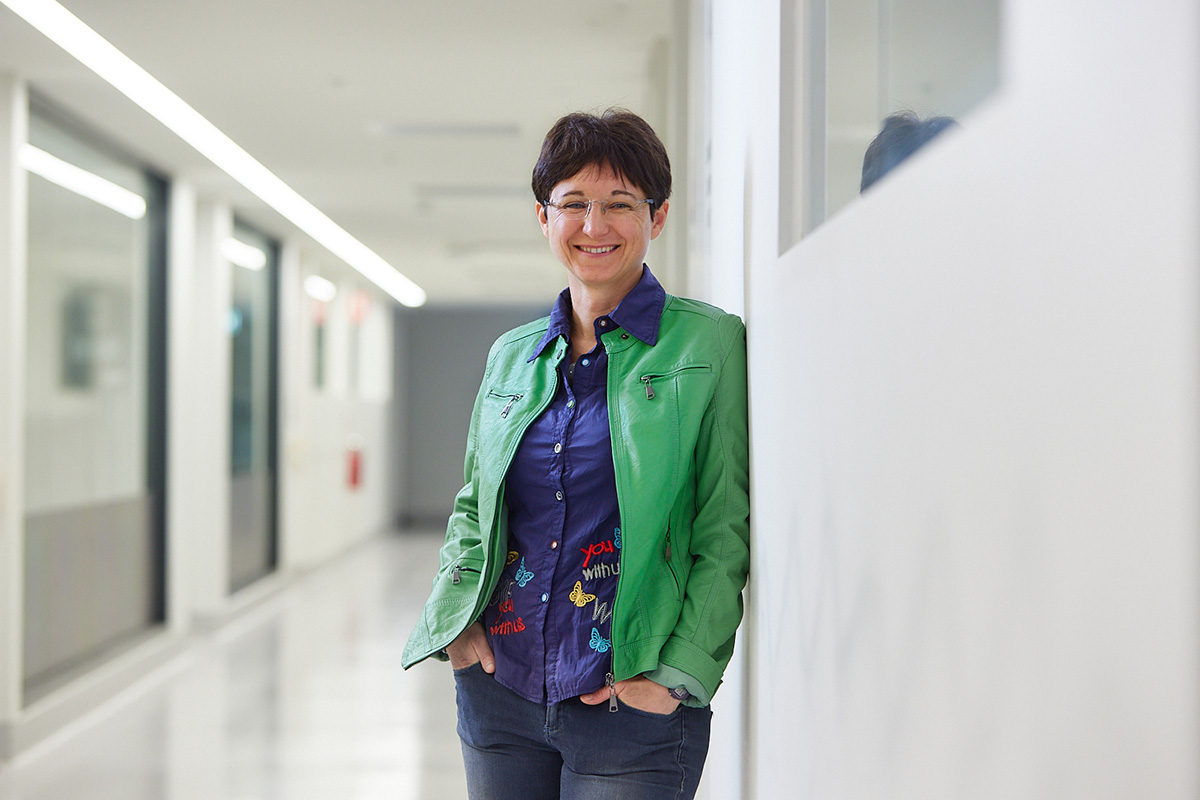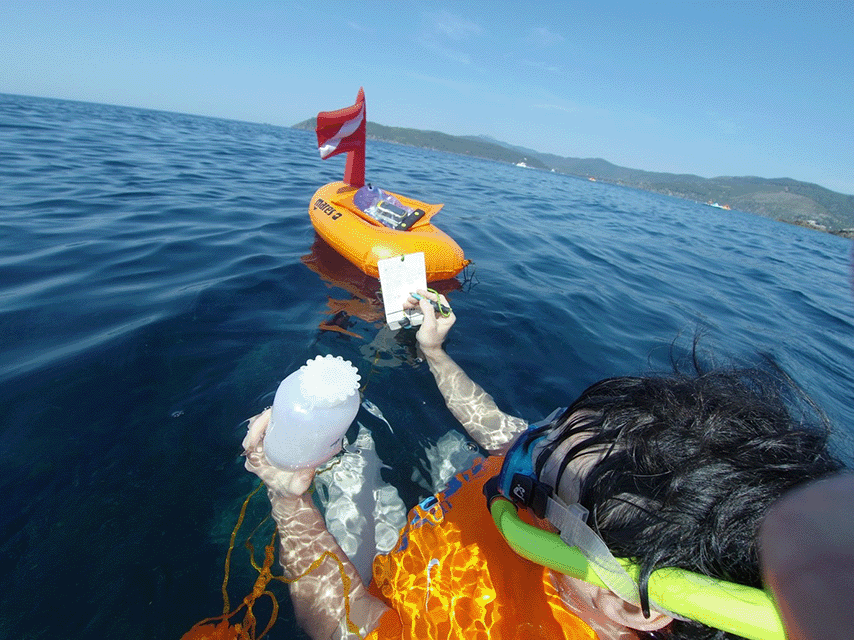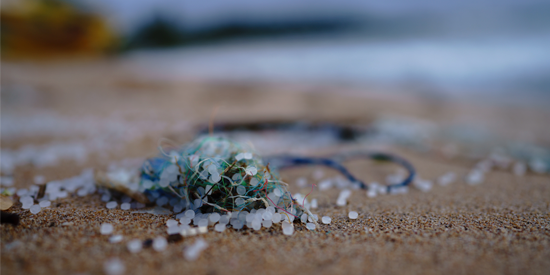Fighting microplastics one beach at a time
Research news
Summary:
- Deakin University scientists are on a mission to increase awareness and promote behavioural changes to combat the global microplastics problem.
- They have tested and refined a scientific protocol that allows school students to collect data on the local spread of microplastics.
- Deakin’s Associate Professor Alessandra Sutti is keen to draw attention to microplastics, which have been reported as being present in air, water, soil and even plants and animals.
A team of Deakin University materials scientists are spearheading research to increase awareness and promote behavioural changes to combat the global microplastics problem.
Backed by the Australian Research Council, the group from Deakin’s Institute for Frontier Materials (IFM) led by Associate Professor Alessandra Sutti, collaborates with the textile and advanced manufacturing industries to enhance sustainability practices and reduce microplastic pollution.
Associate Professor Alessandra Sutti is lead Investigator on several projects in the ARC Research Hub for Future Fibres and her team is bringing private companies together with with Deakin to tackle microplastic shedding.
 Deakin’s Associate Professor Alessandra Sutti has led the award-winning Short Polymer Fibres team at the Institute for Frontier Materials since 2008.
Deakin’s Associate Professor Alessandra Sutti has led the award-winning Short Polymer Fibres team at the Institute for Frontier Materials since 2008.
Invisible plastics, giant problem
Associate Professor Sutti is keen to use her work draw attention to how microplastics are all around us.
“Microplastics are human-made plastic objects ranging in size from 5 mm to 1 micron. They are pervasive in the environment and have been reported as being present in air, water, soil and even plants and animals,” Associate Professor Sutti said.
“Microplastics include plastic and rubber fragments, plastic beads or other small pieces used in cosmetics or manufacturing of plastic objects, as well as textile fibres and even fragments of the coatings that you may find on textiles.”
“Microplastics are often invisible. It's my job to make them visible to as many people as possible and take action to address this significant problem," Associate Professor Sutti said.
Mapping microplastics with help from youngsters
Associate Professor Sutti's research focuses on understanding the sources and pathways of microplastics and the development of sustainable alternatives to non-degradable materials. Her work expands far beyond the laboratory.
"I was drawn to bring my work with me to the beach, when I was on holiday, snorkelling, with family," Associate Professor Sutti said.
"I was interested to see the extent of microplastic pollution in the waters we were snorkelling in. What we found was astonishing—very high levels of microplastics."
Motivated by her findings, Associate Professor Sutti and her team collaborated with Stuart Robottom, from Deakin’s Institute for Intelligent Systems Research and Innovation, and internationally with GLOBE Italy and Labter-CREA MN to develop, test and refine a scientific protocol that could be easily implemented by schools in the water bodies close by.
Upper-primary and high-school students collect data on the local spread of microplastics, empowering them to actively contribute to combating pollution. The information generated by the students is often the first ever data on microplastics pollution in those locations.
"The method, which can literally be 'taken to the beach,' has been tested globally and uses best practice," Associate Professor Sutti explained.
"Hundreds of teachers and thousands of students from over 16 countries have participated in generating valuable data on microplastics."
 A snorkelling trip inspired Associate Professor Sutti – a Science & Technology Australia STEM Ambassador – to use her research to fight microplastics in our oceans.
A snorkelling trip inspired Associate Professor Sutti – a Science & Technology Australia STEM Ambassador – to use her research to fight microplastics in our oceans.
Making an impact to sustainability is important, no matter how big or small
Associate Professor Sutti works alongside a team of materials scientists at IFM: Dr Surya Subianto, Dr Amol Patil, Dr Nathan Thompson, Dr Marzieh Parhizkar, Dr Frank Chen, Dominic Renggli, Anahita Rohanishirvan. The award-winning short polymer fibres group collaborates closely with industry, studying applications of novel materials in fibres and textile coatings, particularly exploring ways to enhance and apply properties such as repelling water or keeping warm.
Their research in monitoring microplastics has expanded through collaborations with prestigious organisations such as the US Department of State (Consulate General Chennai), The Energy and Resources Institute (TERI, India), the University of California Berkeley (USA), San Francisco State University (USA) and the GLOBE Program (USA, Italy, Europe-Eurasia, America, Asia-Pacific), among many others.
The impact of the microplastics data collection method has increased exponentially, with the team spreading their work through research articles and conference presentations, science fairs, conferences, school-university partnerships, local investigations and by informing council policy.
Associate Professor Sutti recently participated in the GLOBE Program Annual Conference in Denver, Colorado, with Stuart Robottom to present the protocol and host a session on the issue of microplastics in the environment.
When it comes to tackling microplastics pollution, Associate Professor Sutti stressed that all individuals can make a difference.
"Microplastics come from the materials we use every day," she said. “By being mindful of our choices and considering how to prevent or minimise the generation of microplastics, each person can contribute to the solution.”
"Environmental sustainability is a way of life. Every effort, big or small, can contribute to a better future for our planet."
Forging stronger ties with Canberra
Associate Professor Sutti was recently announced as a new Science & Technology Australia’s STEM Ambassador. Associate Professor Sutti will use her new role to forge stronger ties between science, technology and public policy as STEM Ambassador to the Member for Fisher, Andrew Wallace.
STEM Ambassadors will meet regularly with their Parliamentarians to deepen ties between Parliament and the STEM sector and help politicians access expert advice on science, technology, engineering, and mathematics. Deakin’s Professor Anna Peeters, Director of the Institute for Health Transformation was also named a STEM Ambassador. The STEM Ambassadors are drawn from Science & Technology Australia’s member organisations and come from a diverse range of academic backgrounds and interests.
About Associate Professor Alessandra Sutti
Associate Professor Sutti has led the award-winning Short Polymer Fibres team at the Institute for Frontier Materials since 2008. Her research interests include polymer chemistry, microplastics, polymer physics, renewable materials, fluid-dynamics and biomaterials for stem cell and cancer immunotherapies.
- Winner of seven Deakin University Vice-Chancellor Awards from 2014-2021
- Winner of the 2014 Victorian Engineering Excellence Award, Institute of Engineers Australia,
- Finalist in the 2014 Australian Engineering Excellence Awards, Institute of Engineers Australia
- Science & Technology Australia’s STEM Ambassador.
- Member of the Materials Research Society (MRS), American Chemical Society (ACS) and GISN Member for The GLOBE Program
- Member of the Geelong Manufacturing Network - Women in Manufacturing Steering Committee
The text of this article is licensed under the Creative Commons Attribution (CC BY) 4.0 International license. We'd love for you to share it, so feel free! Please note that images, videos, graphics and logos are not covered by the CC BY license and may not be used without permission from Deakin University or their respective copyright holder. If you have any questions please contact researchcomms@deakin.edu.au.
Thanks for reading! You can find more stories like this at https://www.deakin.edu.au/research/research-news-and-publications. We ask that Deakin University and individuals are appropriately credited and that you include links back to this website. Quotes in this article can be extracted for other articles provided individuals are appropriately credited and you include a link back to the article URL.
Share this story

Key Fact
Microplastics are human-made plastic objects ranging in size from 5 mm to 1 micron. They are pervasive in the environment and have been reported as being present in air, water, soil and even plants and animals.
